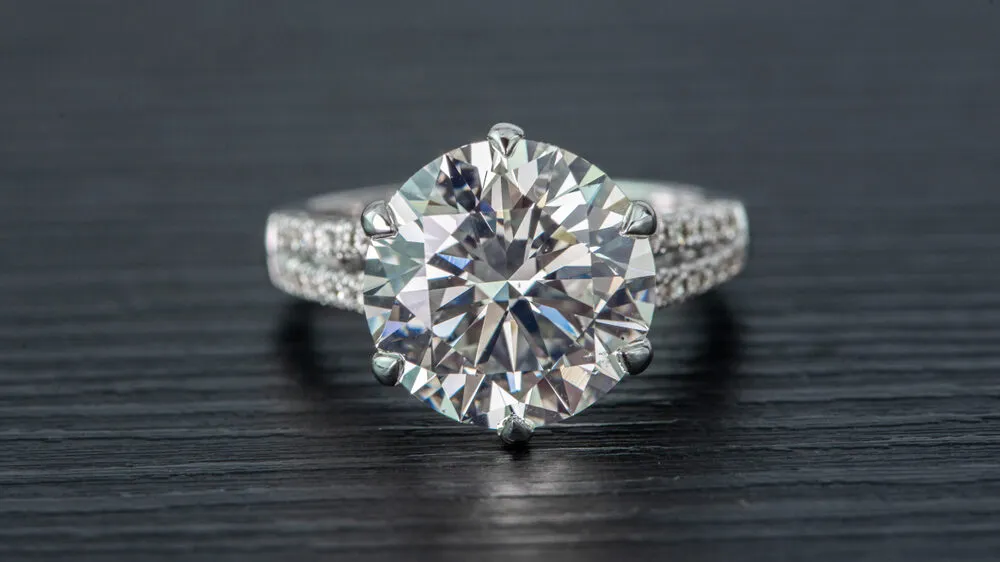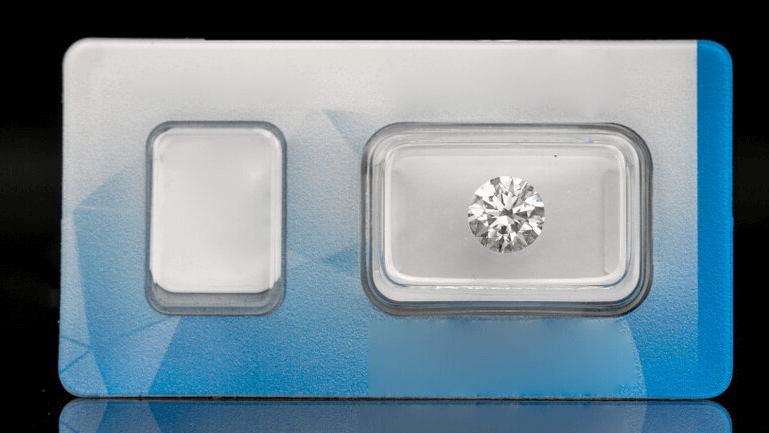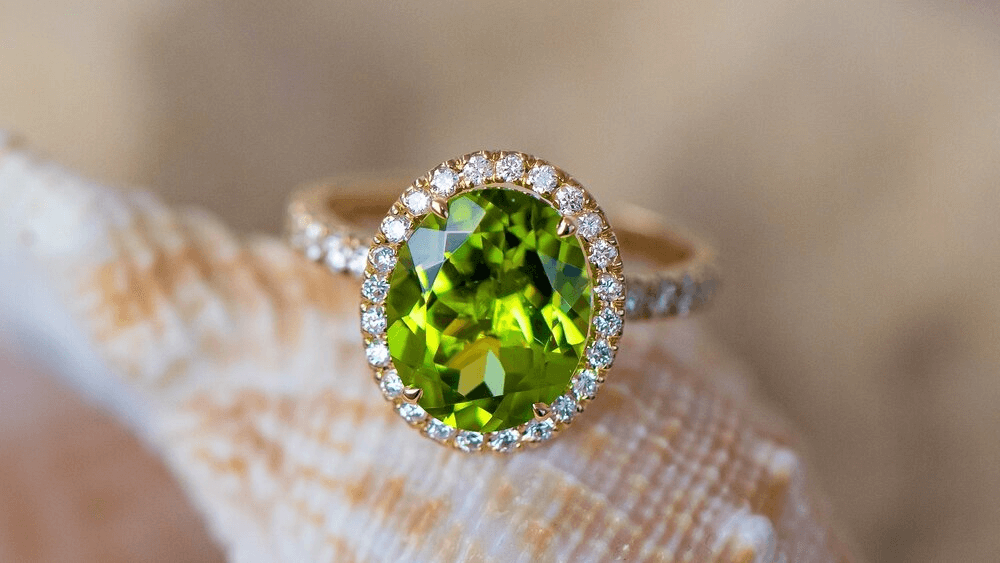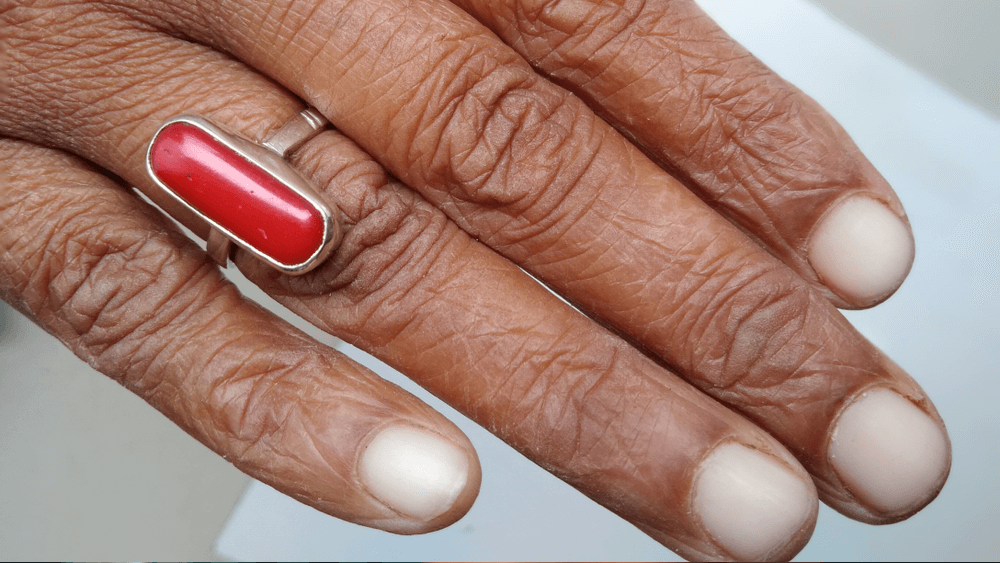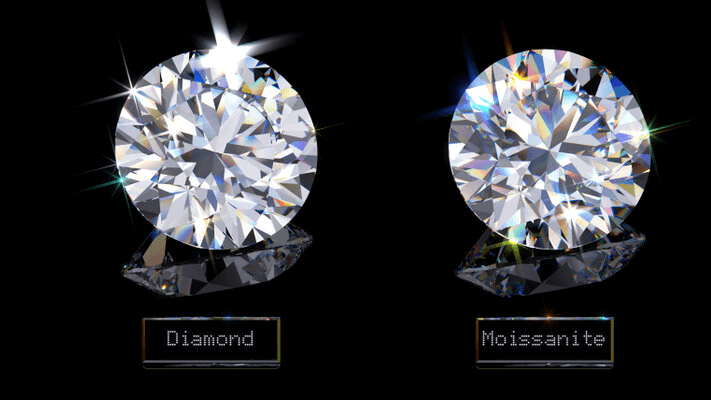CVD vs HPHT Lab Diamonds: What is the Difference?

By Gary A.

Edited by Olivia H.
Published Aug 30, 2024
Edited on Jan 8, 2025
Lab diamonds are a complex subject, but they’re worth knowing about if you’re unsure about the cost of a natural diamond. Here’s our full guide to CVD vs HPHT.

Navigate this guide:
- 7 Quick Tips for Choosing a Diamond Engagement Ring: CVD vs. HPHT
- Introduction: The Evolution of Diamond Engagement Rings
- Unveiling Lab-Grown Diamonds: A New Era of Sparkle
- CVD Diamonds: The Purity Revolution
- HPHT Diamonds: Mimicking Nature’s Craft
- CVD vs. HPHT: A Comparative Analysis
- Making the Right Choice for Your Engagement Ring
- Our Expert Take
- 7 Frequently Asked Questions About Lab Grown Diamonds
7 Quick Tips for Choosing a Diamond Engagement Ring: CVD vs. HPHT
When selecting a lab grown diamond engagement ring, understanding the nuances between CVD and HPHT lab grown diamonds is crucial. Here are practical tips to guide your decision, ensuring you get the best value and quality.
- Tip 1: Understand the Growth Process
- CVD Diamonds: Recognize that CVD diamonds may undergo HPHT treatment post-growth to enhance color and clarity. Inspect for uniformity in appearance.
- HPHT Diamonds: Be aware that HPHT diamonds might have a yellowish tint or blue nuance due to nitrogen or boron exposure during formation. Examine the diamond under different lighting conditions to detect any color nuances.
- Tip 2: Examine Clarity Closely
- Lab grown diamonds, whether CVD or HPHT, can have inclusions. HPHT diamonds might have metallic inclusions, making them slightly magnetic, which is a rarity in natural diamonds. Use a jeweler’s loupe to inspect the diamond for inclusions, focusing on their location and how they might affect the stone’s brilliance.
- Tip 3: Assess the Color
- Given that HPHT diamonds can display a yellowish hue and CVD diamonds might show strains under magnification, evaluate the color grade carefully. Remember that the setting can influence the perceived color of the diamond, so consider viewing the stone loose as well as mounted.
- Tip 4: Check for Certification
- Always verify that your diamond comes with a certification from a reputable lab that clearly states whether it’s CVD or HPHT. This certification should detail the diamond’s 4Cs, ensuring transparency about its qualities. Trust only IGI or GIA certificates.
- Tip 5: Investigate the Cut Quality
- The cut is a critical factor in a diamond’s brilliance and fire. For both CVD and HPHT diamonds, ensure the cut is graded at least “Very Good” to maximize the stone’s reflective qualities. A well-cut diamond will sparkle more, irrespective of its growth method.
- Tip 6: Consider the Carat Weight vs. Size Appearance
- Lab grown diamonds often offer more size for the same carat weight compared to natural diamonds due to their growth process. However, prioritize how the diamond looks on the ring and to the naked eye over the carat weight alone, especially since some cuts can appear larger.
- Tip 7: Be Mindful of the Price
- While both CVD and HPHT diamonds present a cost-effective alternative to natural diamonds, their prices can vary due to the differences in production costs and quality. Compare diamonds of similar 4Cs across both types to ensure you’re getting a fair price for the chosen method.
Now that you’ve got these practical tips, use Jeweler AI below to find the perfect engagement ring that suits your style and budget:
Introduction: The Evolution of Diamond Engagement Rings
The diamond industry has witnessed a significant transformation over the years, with the rise of lab grown diamonds marking a pivotal shift in consumer preferences. Traditionally, diamonds were synonymous with earth-mined stones, which, while beautiful, have long raised concerns regarding environmental impact and ethical sourcing. In recent years, however, lab grown diamonds have emerged as a sustainable and ethical alternative, offering the same sparkle and brilliance without the associated drawbacks.
From Earth-Mined to Lab-Grown: A Sustainable Shift
Lab grown diamonds are not only gaining traction for their environmental benefits but also for their quality and affordability. As more consumers become aware of the advantages these diamonds offer, the demand for lab grown options continues to rise. This shift signifies more than just a change in buying habits—it represents a broader movement toward more conscious, responsible consumption in the luxury goods market.
Unveiling Lab-Grown Diamonds: A New Era of Sparkle
Let’s start with the very basics – the 101 of lab grown diamonds.
The Science Behind Lab-Grown Gems
Lab grown diamonds are created through advanced technological processes that replicate the natural conditions under which diamonds form in the earth. These diamonds are produced using two primary methods: Chemical Vapor Deposition (CVD) and High-Pressure High-Temperature (HPHT). Both techniques aim to create diamonds that are chemically, physically, and optically identical to their natural counterparts, but each process offers distinct advantages and characteristics.
The CVD method involves breaking down carbon-rich gases in a chamber, allowing carbon atoms to accumulate on a diamond seed, layer by layer. This results in diamonds that are often purer and free from many of the inclusions found in natural diamonds. On the other hand, HPHT mimics the natural diamond formation process by applying intense pressure and heat to a carbon source, producing diamonds that closely resemble those formed in the earth’s mantle.
Understanding the science behind these methods is crucial for consumers looking to make an informed choice. Both CVD and HPHT diamonds have their own unique features, and the method used can influence factors such as clarity, color, and cost.
CVD vs. HPHT: Decoding the Techniques
When comparing CVD and HPHT diamonds, it’s essential to understand how each method works and the resulting characteristics of the diamonds produced. The CVD process starts with a thin slice of diamond (often referred to as a seed) placed in a chamber filled with carbon-rich gases, such as methane. The gases are ionized into plasma, causing carbon atoms to bond to the seed, layer by layer, forming a diamond. CVD diamonds are known for their high purity levels, as the controlled environment minimizes the risk of impurities.
In contrast, the HPHT process attempts to recreate the conditions found deep within the earth, where natural diamonds form. A carbon source is subjected to extreme pressure and temperatures in a press, leading to the formation of a diamond. HPHT diamonds often have a slightly different crystal structure, known as cuboctahedral, which can affect their optical properties and color.
One of the key differences between these methods is the potential for inclusions. HPHT diamonds may have metallic inclusions due to the metallic catalysts used in the process, while CVD diamonds tend to have fewer inclusions, which contributes to their growing popularity. Additionally, the choice between CVD and HPHT can influence the diamond’s color and how much post-growth treatment it may require to achieve the desired appearance.
CVD Diamonds: The Purity Revolution
CVD is a hugely popular technique for growing diamonds quickly and relatively efficiently. Here’s what you need to know.
The Chemical Vapor Deposition Process Explained
Chemical Vapor Deposition (CVD) is a sophisticated technique that has revolutionized the production of lab grown diamonds. In this process, a diamond seed is placed inside a vacuum chamber, where it is exposed to a mix of gases like methane and hydrogen. These gases are heated to high temperatures, causing the carbon atoms to separate from the gases and settle onto the seed. Over time, these carbon atoms accumulate layer by layer, forming a diamond.
One of the primary advantages of the CVD method is the level of control it provides over the diamond-growing environment. This control results in diamonds that are often purer, with fewer inclusions and irregularities. Additionally, CVD diamonds can be produced in a variety of shapes and sizes, making this method highly versatile for creating custom diamond jewelry.
Why CVD Diamonds Are Gaining Popularity
CVD diamonds are increasingly popular due to their high purity and the flexibility of the production process. Unlike HPHT diamonds, which can sometimes exhibit metallic inclusions, CVD diamonds are often free from these imperfections, resulting in a clearer, more visually appealing stone. This makes CVD diamonds particularly desirable for those seeking a high-quality diamond with fewer imperfections.
Moreover, the CVD process allows for the production of larger diamonds at a lower cost, making them an attractive option for budget-conscious buyers who do not want to compromise on quality. As more consumers become aware of these benefits, CVD diamonds are becoming a preferred choice in the lab grown diamond market.
HPHT Diamonds: Mimicking Nature’s Craft
The High-Pressure High-Temperature Method Uncovered
The High-Pressure High-Temperature (HPHT) method is one of the oldest and most established techniques for producing lab grown diamonds. This method closely mimics the natural conditions under which diamonds form in the earth. In the HPHT process, a carbon source is subjected to pressures of approximately 5 GPa and temperatures of around 1,500°C in a press, causing the carbon atoms to crystallize into a diamond.
HPHT diamonds are often recognized for their natural-looking crystal structure, which can resemble that of earth-mined diamonds. This method also allows for the production of both colorless and fancy-colored diamonds, with post-growth treatments available to enhance or modify the diamond’s color. While HPHT diamonds may sometimes require additional treatment to achieve a desirable appearance, the method remains popular for its ability to produce high-quality diamonds that closely replicate natural ones.
The Unique Characteristics of HPHT Diamonds
HPHT diamonds are known for their unique crystal structure and ability to exhibit a wide range of colors, including rare blues and yellows. This characteristic makes HPHT diamonds appealing for those looking to create custom jewelry with a distinct and vibrant appearance. Additionally, the HPHT process often results in diamonds with a slightly higher brilliance due to their cuboctahedral crystal formation.
However, HPHT diamonds may contain metallic inclusions from the catalysts used during their formation, which can affect their clarity and value. Despite this, HPHT diamonds remain a popular choice for those who appreciate their natural appearance and the ability to produce fancy-colored diamonds that are often out of reach for many consumers.
CVD vs. HPHT: A Comparative Analysis
The ultimate showdown between two newcomers…
Clarity, Color, and Cost: A Detailed Comparison
When comparing CVD and HPHT diamonds, several factors come into play, particularly clarity, color, and cost. CVD diamonds typically offer higher clarity due to the controlled environment in which they are grown, resulting in fewer inclusions. This makes them an excellent choice for those who prioritize a clear, flawless appearance in their diamonds.
In terms of color, CVD diamonds often require less post-growth treatment to achieve a colorless or near-colorless state, which can be a significant advantage. HPHT diamonds, on the other hand, can naturally exhibit a wider range of colors, including rare and vibrant hues, though they may need additional treatments to reach a desirable color grade.
Cost is another crucial factor to consider. While both CVD and HPHT diamonds can be more affordable than their natural counterparts, CVD diamonds are often less expensive to produce, resulting in lower prices for shoppers. However, HPHT diamonds, especially those with unique colors, may command higher prices due to their rarity and appeal.
Ultimately, the choice between CVD and HPHT diamonds depends on what you value most—whether it’s the purity and clarity of a CVD diamond or the unique color options and natural appearance of an HPHT diamond.
Debunking Myths and Misconceptions
Despite the growing popularity of lab grown diamonds, several myths and misconceptions persist, particularly around the differences between CVD and HPHT diamonds. One common myth is that lab grown diamonds are inferior to natural diamonds, which isn’t true. Both CVD and HPHT diamonds are chemically identical to natural diamonds and exhibit the same physical properties, including hardness and brilliance.
Another misconception is that CVD diamonds are always superior to HPHT diamonds. While CVD diamonds often have fewer inclusions, HPHT diamonds offer unique characteristics, such as natural-looking colors and crystal structures, that may be more desirable to some buyers. Understanding the strengths and limitations of each method is essential to making an informed decision.
Making the Right Choice for Your Engagement Ring
When choosing between CVD and HPHT diamonds for your engagement ring, several factors should guide your decision. Clarity is a significant consideration—if a flawless appearance is your priority, CVD diamonds might be the better option due to their typically higher clarity. However, if you’re drawn to unique colors or a more natural-looking diamond, HPHT might be more appealing.
Another factor is the intended style of the ring. CVD diamonds are versatile and can be produced in various shapes and sizes, making them suitable for a wide range of settings. On the other hand, HPHT diamonds, with their distinct crystal structure, might be better suited for those looking for something that closely resembles a traditional earth-mined diamond.
Cost is also an essential factor. While both CVD and HPHT diamonds offer affordability compared to natural diamonds, CVD diamonds often come at a lower price point, which can be an advantage if you’re working within a specific budget. Ultimately, the choice depends on your personal preferences, budget, and the specific qualities you’re looking for in a diamond.
Expert Tips for Evaluating Lab-Grown Diamonds
When evaluating lab grown diamonds, there are a few key tips to keep in mind. First, always check the diamond’s certification from a reputable lab, such as the GIA – the only lab we recommend to our readers. This certification will provide essential details about the diamond’s 4Cs and confirm its authenticity.
Next, consider the diamond’s origin and the method used to create it—whether CVD or HPHT. Understanding the differences between these methods can help you choose a diamond that meets your specific needs and preferences. It’s also important to inspect the diamond closely for any inclusions or color variations, particularly with HPHT diamonds, where these factors can be more prominent.
Finally, take your time to compare different diamonds and settings before making a decision. Lab grown diamonds offer a wide range of options, so it’s worth exploring various possibilities to find the perfect ring that suits your style and budget.
Our Expert Take
While lab grown diamonds have carved out a niche in the jewelry industry as an alternative option, natural diamonds continue to hold a timeless appeal that many buyers find irreplaceable. Choosing between a CVD or HPHT diamond allows you to explore different aspects of lab grown technology, but it’s important to consider what matters most to you—whether it’s the natural origin and unmatched heritage of earth-mined diamonds or the innovative processes behind lab grown stones. As the market evolves, the choice remains deeply personal, guided by both ethical considerations and the enduring allure of a natural diamond’s unique story.
7 Frequently Asked Questions About Lab Grown Diamonds
- Q: What is the difference between CVD and HPHT diamonds?
- A: CVD (Chemical Vapor Deposition) and HPHT (High Pressure High Temperature) refer to the two main methods used to create lab grown diamonds. CVD diamonds are formed by layering carbon atoms in a vacuum chamber, while HPHT diamonds are created by mimicking the natural diamond-forming conditions deep within the Earth, using high pressure and temperature.
- Q: Are CVD diamonds better than HPHT?
- A: Neither method is inherently “better” as both produce real, high-quality diamonds. The choice between CVD and HPHT diamonds often comes down to personal preference, specific characteristics of individual diamonds, and sometimes, price considerations.
- Q: Can you tell the difference between CVD and HPHT diamonds with the naked eye?
- A: No, it’s impossible to distinguish between CVD and HPHT diamonds with the naked eye. Both types of lab grown diamonds exhibit the same physical, chemical, and optical properties as natural diamonds.
- Q: Do CVD and HPHT diamonds have the same durability as natural diamonds?
- A: Yes, both CVD and HPHT lab grown diamonds share the same hardness and durability as natural diamonds, ranking 10 on the Mohs scale of mineral hardness.
- Q: Will a diamond tester differentiate between CVD, HPHT, and natural diamonds?
- A: No, standard diamond testers, which measure thermal conductivity or electrical conductivity, cannot differentiate between lab grown (CVD or HPHT) and natural diamonds because they all share the same properties.
- Q: Can HPHT treatment change the color of CVD diamonds?
- A: Yes, HPHT treatment can be applied to CVD diamonds post-growth to enhance or alter their color. This process can improve the color grade of the diamond, making it appear whiter or removing unwanted color tints.
- Q: Are lab grown diamonds eco-friendly?
- A: Lab grown diamonds, including both CVD and HPHT, are considered more eco-friendly than mined diamonds due to their reduced environmental impact. The lab-growing process requires less land disturbance and water usage, and it avoids the socio-economic issues associated with traditional diamond mining.
Discover the perfect match with Jeweler AI: Navigate CVD and HPHT diamonds effortlessly for your dream ring.
FOLLOW-UP GUIDE SERIES

